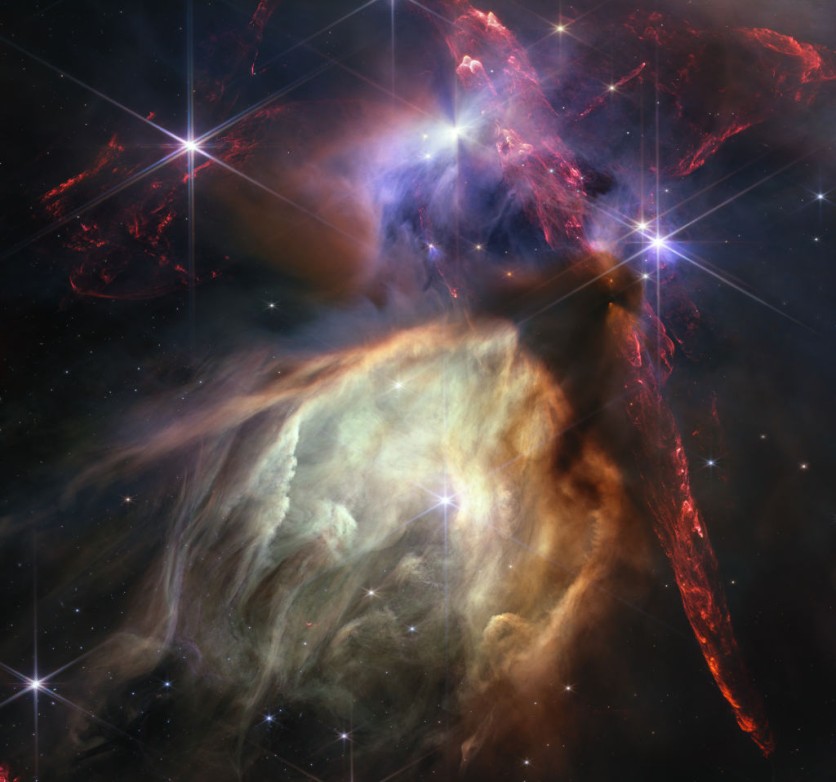In a fascinating revelation, NASA's James Webb Space Telescope (JWST) has captured an image featuring a previously elusive dusty galaxy, the AzTECC71.
According to Phys.org, this enigmatic object was initially observed as a glowing blob through ground-based telescopes and then completely disappeared in images from the Hubble Space Telescope. Now, it has reappeared in a distinct form through the lens of the JWST.

Dusty Star-Forming Galaxy
Astronomers from the COSMOS-Web collaboration have detected AzTECC71 as a dusty star-forming galaxy, a celestial entity actively generating numerous new stars while being veiled in a shroud of dust.
This particular galaxy is believed to have existed around 1 billion years after the Big Bang. The discovery challenges previous assumptions about the rarity of such galaxies in the early universe, suggesting they may be three to 10 times more common than initially thought.
In a statement, Jed McKinney, a postdoctoral researcher at The University of Texas at Austin, expressed excitement about the findings, describing AzTECC71 as a "real monster" forming hundreds of new stars annually.
"Even though it looks like a little blob, it's actually forming hundreds of new stars every year. And the fact that even something that extreme is barely visible in the most sensitive imaging from our newest telescope is so exciting to me. It's potentially telling us there's a whole population of galaxies that have been hiding from us," McKinney said.
The COSMOS-Web project, a major JWST research initiative, spearheads efforts to map up to one million galaxies within a specific region of the sky. Co-led by Caitlin Casey, an associate professor at UT Austin, the project aims to explore the earliest structures of the universe.
The initiative has already identified more than a dozen additional candidates, contributing to understanding galaxy evolution.
Hubble-Dark Galaxies
Dusty star-forming galaxies are challenging to observe in optical light due to the absorption of starlight by dust, which is re-emitted at longer wavelengths, according to the research team. Traditionally referred to as "Hubble-dark galaxies," these entities were primarily observed from optical perspectives.
With its enhanced sensitivity and capability to operate in the infrared spectrum, the JWST provides a groundbreaking opportunity to study these heavily dust-obscured galaxies' optical and infrared properties.
AzTECC71 was initially detected as a vague dust emission by the James Clerk Maxwell Telescope in Hawaii. Subsequent observations using the ALMA telescope in Chile and the JWST revealed the galaxy's presence, demonstrating the JWST's ability to pierce through thick dusty veils and explore hidden aspects of the universe.
This discovery prompts a reevaluation of the understanding of the early universe, suggesting it might have been significantly dustier than previously believed.
As the COSMOS-Web project continues its observations, astronomers anticipate unveiling more of these JWST-faint galaxies and gaining deeper insights into the obscured realms of cosmic evolution.
The estimated redshift of AzTECC71 places it around 900 million years after the Big Bang, adding a valuable piece to the cosmic puzzle. The findings of the study were published in the Astrophysical Journal.

![Apple Watch Series 10 [GPS 42mm]](https://d.techtimes.com/en/full/453899/apple-watch-series-10-gps-42mm.jpg?w=184&h=103&f=9fb3c2ea2db928c663d1d2eadbcb3e52)



